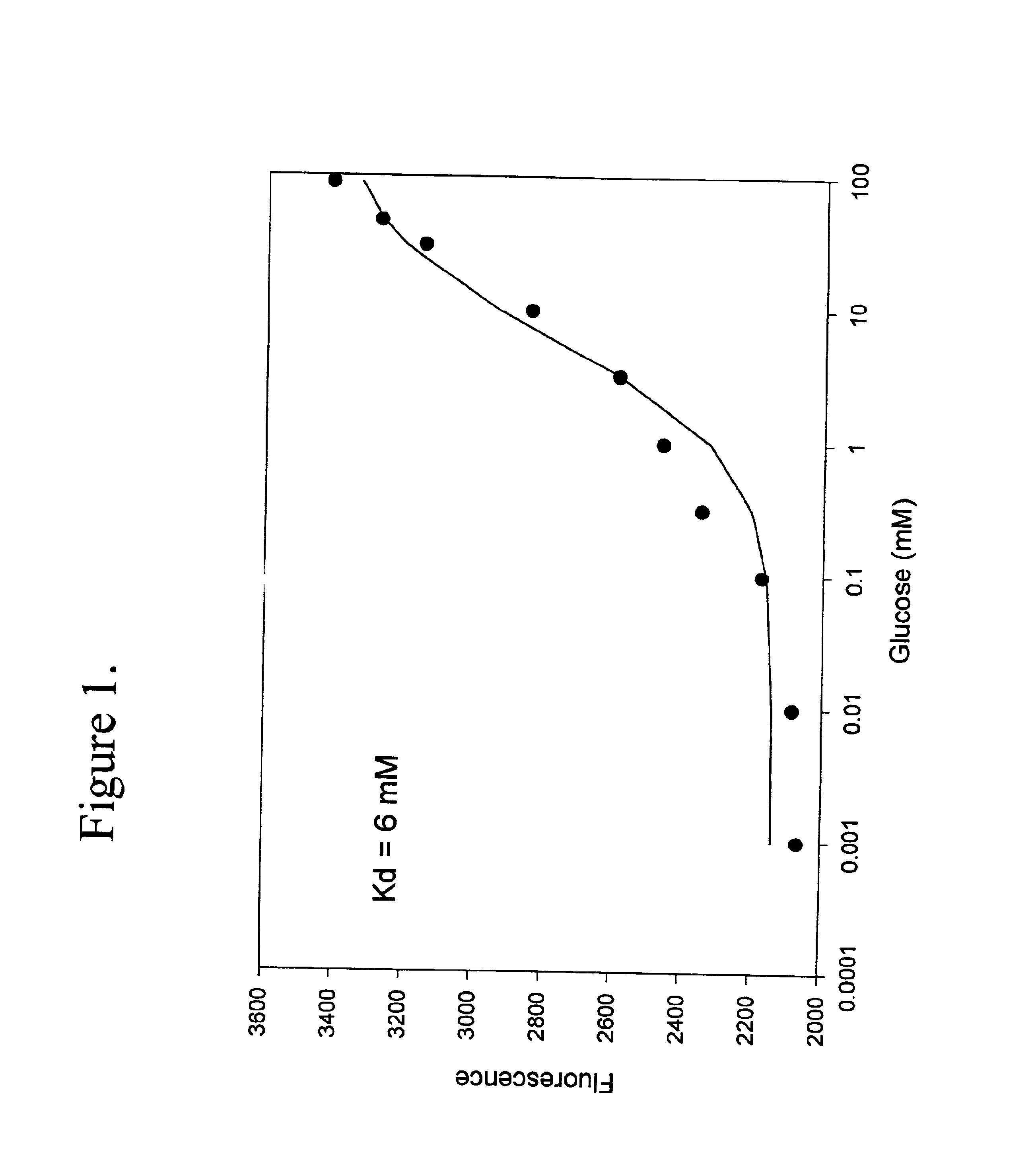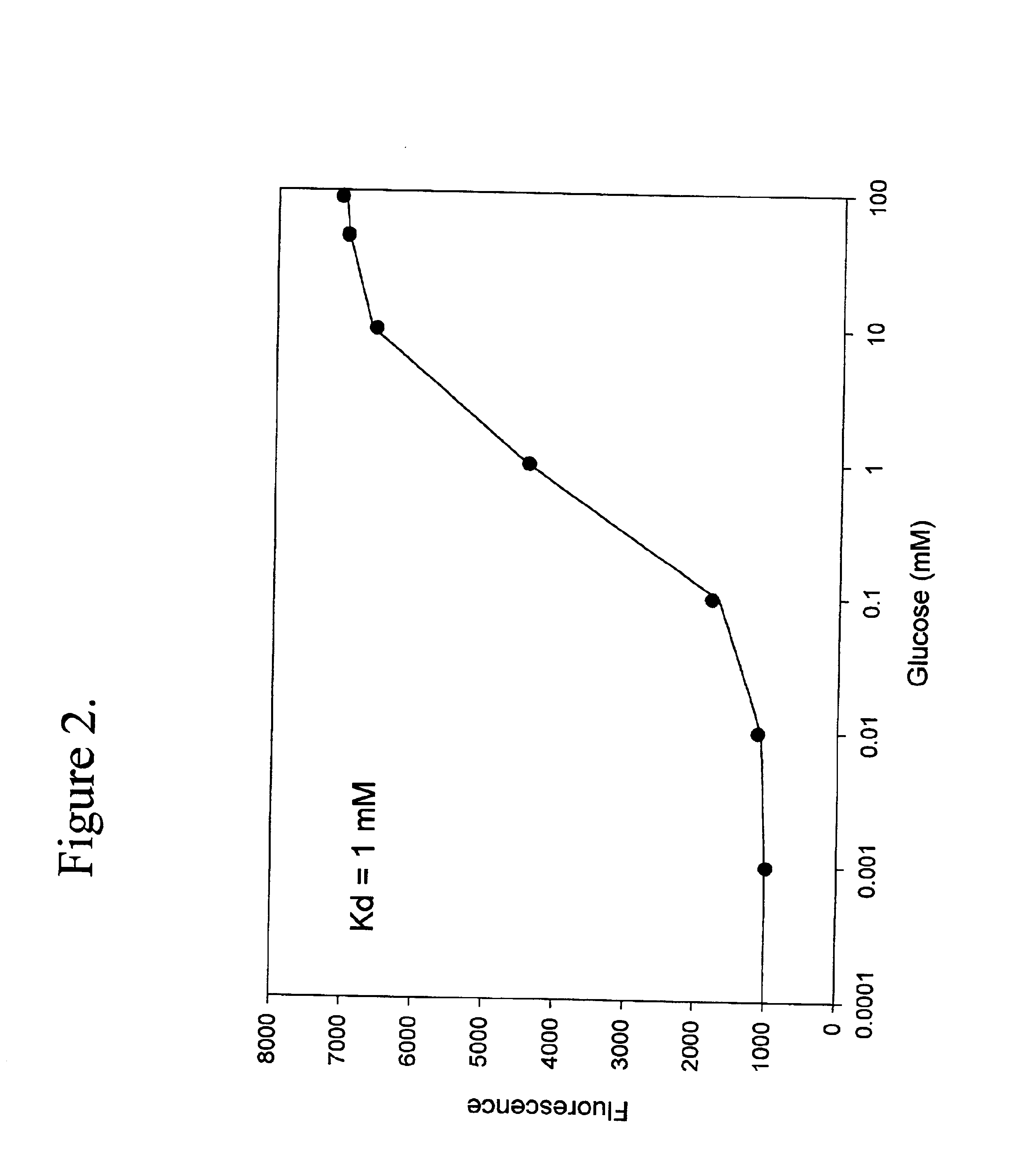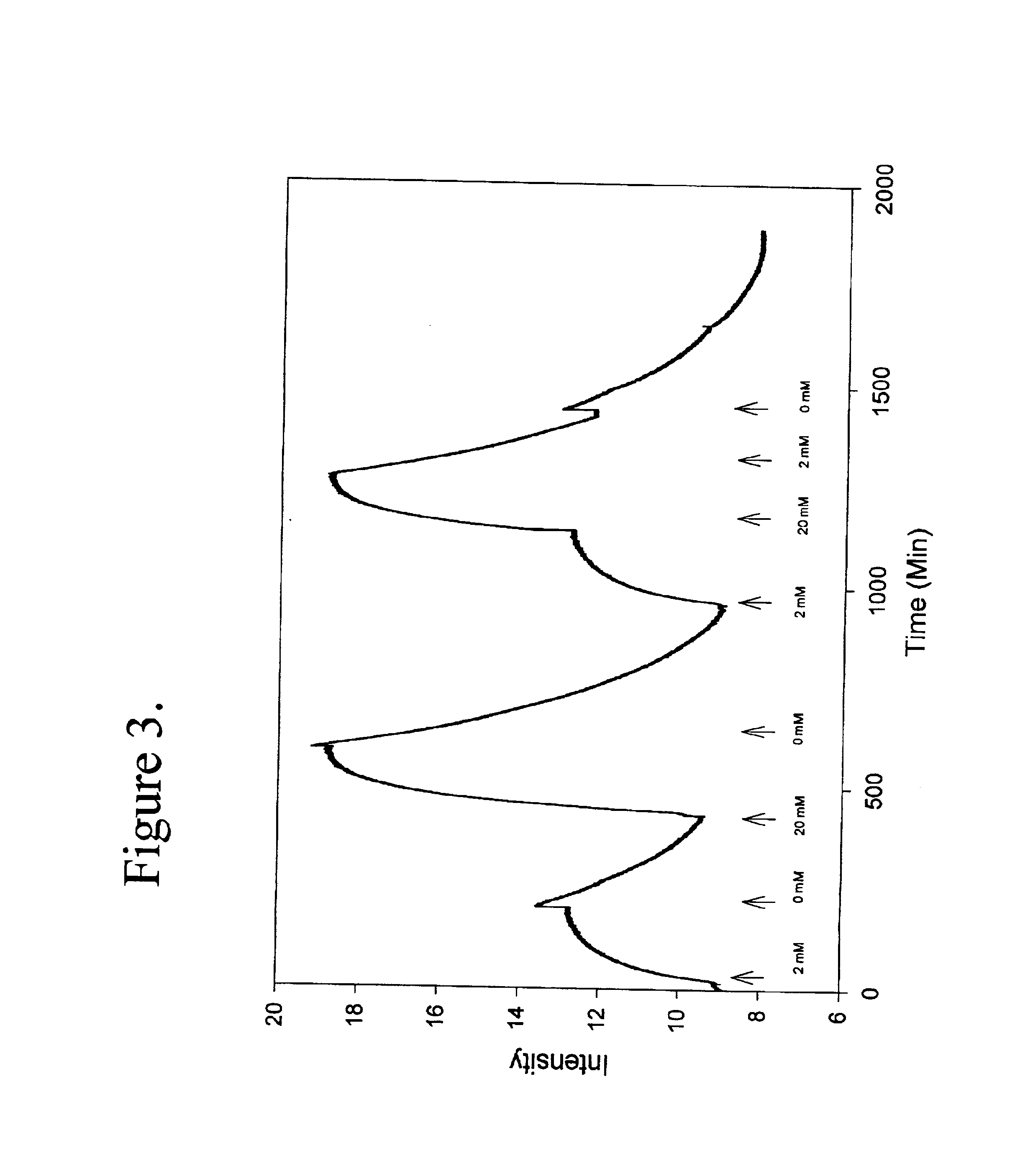Binding protein as biosensors
a technology of binding protein and biosensor, which is applied in the field of biotechnology, can solve the problems of inability to bind to the associated reporter group, difficulty in patient compliance, and influence of oxygen level,
- Summary
- Abstract
- Description
- Claims
- Application Information
AI Technical Summary
Benefits of technology
Problems solved by technology
Method used
Image
Examples
Embodiment Construction
The term biosensor generally refers to a device that uses specific biochemical reactions mediated by isolated enzymes, immunosystems, tissues, organelles or whole cells to detect chemical compounds, usually by electrical, thermal or optical signals. As used herein a “biosensor” refers to a protein capable of binding to an analyte which may be used to detect an analyte or a change in analyte concentration by a detector means as herein described.
The term “binding proteins” refers to proteins which interact with specific analytes in a manner capable of providing or transducing a detectable and / or reversible signal differentiable either from when analyte is not present, analyte is present in varying concentrations over time, or in a concentration-dependent manner, by means of the methods described herein. The transduction event includes continuous, programmed, and episodic means, including one-time or reusable applications. Reversible signal transduction may be instantaneous or may be t...
PUM
| Property | Measurement | Unit |
|---|---|---|
| excitation wavelength | aaaaa | aaaaa |
| emission wavelength | aaaaa | aaaaa |
| emmision wavelengths | aaaaa | aaaaa |
Abstract
Description
Claims
Application Information
 Login to View More
Login to View More - R&D
- Intellectual Property
- Life Sciences
- Materials
- Tech Scout
- Unparalleled Data Quality
- Higher Quality Content
- 60% Fewer Hallucinations
Browse by: Latest US Patents, China's latest patents, Technical Efficacy Thesaurus, Application Domain, Technology Topic, Popular Technical Reports.
© 2025 PatSnap. All rights reserved.Legal|Privacy policy|Modern Slavery Act Transparency Statement|Sitemap|About US| Contact US: help@patsnap.com



